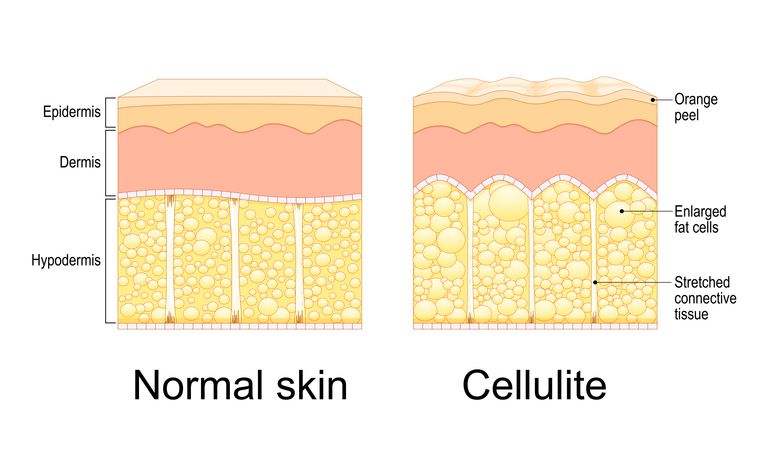
Author: Natalie Ng|Updated: 27 May 2025
Amla oil’s been around for generations. Made from the Indian gooseberry (also known as amla fruit), it’s a go-to in Ayurvedic medicine for everything from scalp health to stronger, shinier strands. And while there's not a ton of hard science behind it yet, plenty of people swear by it for things like reducing hair fall, supporting healthy hair growth, and improving the overall feel of their hair. Thanks to its vitamin C and antioxidant content, amla might help protect your hair follicles, keep your scalp in better shape, and even slow down early greying. Whether you’re trying to treat hair loss, thicken up your hair strands, or just keep your roots healthy, amla could be worth a try. Curious how it works and what to expect? Keep reading—we’re breaking down the real benefits of using amla for hair health.

Amla Oil for Thinning Hair Benefit 1: Promotes hair growth by supporting follicles and scalp health
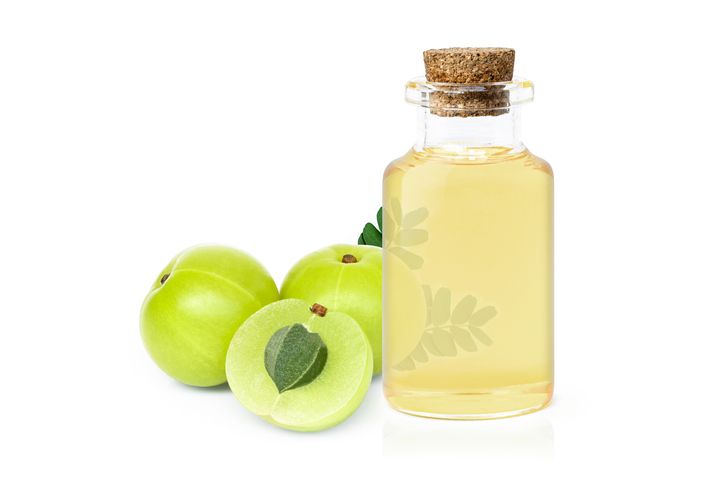
Amla oil may help stimulate hair follicles and support healthy growth
Amla oil is widely used to promote hair growth, especially in traditional remedies. It’s packed with antioxidants and vitamin C, which may help protect hair follicles and improve scalp health—both important for encouraging regular and healthy hair growth.
Many people apply amla oil directly to the scalp to gently massage the roots. This process may improve blood circulation, which helps deliver oxygen and nutrients to the follicles. A healthy scalp environment is essential for supporting the anagen phase of the hair cycle, where active growth happens.
Amla hair oil is often combined with coconut oil, aloe vera, or used in an amla hair mask. These blends help hydrate the scalp and reduce scalp irritation, which can contribute to better hair strand strength and less breakage. The nutrients in amla are also believed to help strengthen hair roots and reduce overall hair fall.
What to know about results
While many people use amla to promote hair growth, clinical studies are still limited. So far, there’s no strong scientific proof that it directly activates dormant hair follicles. But with regular use and a healthy scalp routine, amla oil may still support thicker, stronger hair over time—especially when used as part of a balanced hair care approach.

Amla Oil for Thinning Hair Benefit 2: Strengthens hair roots and helps prevent breakage

Amla oil supports root stability and hair resilience
Amla oil is widely used to help reduce hair breakage and support stronger hair roots. Many apply it as a regular hair oil treatment, especially at the scalp, to protect against everyday damage that weakens the base of the hair. By coating the hair shaft and reaching the roots, amla oil may reduce dryness and improve flexibility, which can lower the chance of breakage during brushing or washing.
This oil is often blended with coconut oil or used in an amla hair mask to provide added moisture to the scalp and roots. A well-hydrated scalp supports hair strength by keeping the base of the strands less prone to snapping.
Protective layer helps reduce external damage
Amla hair oil may also help shield hair strands from external stress, like heat or environmental dryness. Its antioxidant content may offer light protection to the outer layer of the hair, helping maintain smoothness and reduce split ends. People who regularly style their hair or expose it to hot tools often use amla oil to keep their hair looking smoother and feeling stronger.
While current research hasn’t confirmed deep structural changes in the hair roots from topical amla use, many people still find it helpful in managing everyday hair breakage as part of a gentle care routine.
Read More
Book Now to Experience
F8 Hair Regrowth Treatment
1 Minute Self-Registration
Date should not be before minimal date

Amla Oil for Thinning Hair Benefit 3: Nourishes the scalp with essential nutrients
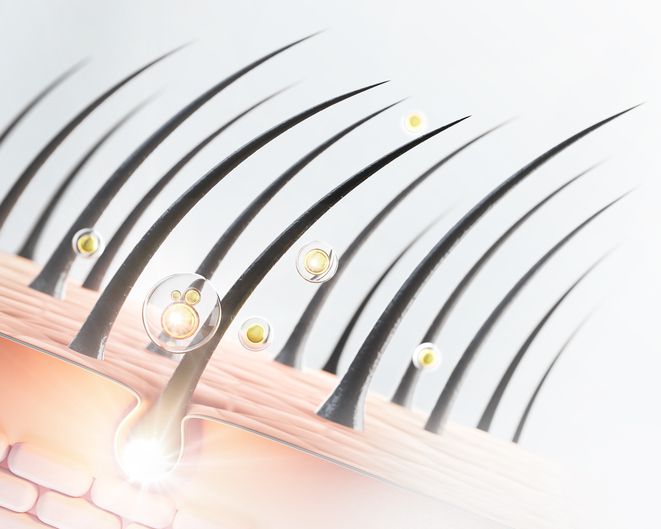
Amla oil supports scalp health with its natural compounds
Amla oil is often used to improve scalp health by providing moisture and nutrients that may support hair follicles. The oil contains compounds found in the amla fruit—like vitamin C, antioxidants, and phytonutrients—which may help maintain a healthy scalp environment, especially when applied regularly as a scalp treatment or hair oil.
Applying amla oil to the scalp can help reduce dryness, soothe mild irritation, and support overall scalp balance. A healthy scalp is important for regular hair growth, and this is one reason why amla hair oil remains a popular ingredient in herbal medicines and ayurvedic routines.
People often use amla oil on its own or mix amla powder with aloe vera gel or coconut oil to create nourishing scalp masks. These mixtures may offer a soothing effect while adding lightweight moisture to the scalp surface, which may benefit those dealing with dryness, flaking, or hair fall.
Nutrients may support follicle function
While it’s not proven that amla oil delivers nutrients deep into the skin, topical use may still offer surface-level benefits. Keeping the scalp hydrated and free of buildup may support hair roots and encourage increased hair growth over time. The anti inflammatory properties of amla oil may also help calm minor scalp irritation and support a healthy scalp barrier.

Amla Oil for Thinning Hair Benefit 4: Nourishes your scalp with essential nutrients

Amla oil may support a healthier scalp environment
When you apply amla oil to your scalp, you're giving it a blend of natural ingredients that may help keep it balanced and moisturized. The oil contains vitamin C, antioxidants, and other nutrients found in the amla fruit—also known as Indian gooseberry—which are often used to support scalp health in traditional remedies.
If your scalp feels dry or tight, using amla oil as a hair treatment can help add moisture and relieve surface discomfort. A healthy scalp makes it easier for hair follicles to function properly, which may support regular hair growth. You can use the oil on its own or mix amla powder with aloe vera gel or coconut oil to create a scalp mask.
Helps reduce surface irritation and buildup
Massaging amla hair oil into your scalp may help loosen dead skin, reduce mild flaking, and clear buildup from styling products. This can leave your scalp feeling cleaner and less irritated, especially if you're dealing with oiliness or product residue.
While more research is needed to confirm how deeply the nutrients absorb, using amla oil regularly can still help you maintain a cleaner, healthier scalp. It's a simple way to support your hair care routine, especially if you're looking for natural ingredients that may benefit both your scalp and your hair roots.
Book Now to Experience
F8 Hair Regrowth Treatment
1 Minute Self-Registration
Date should not be before minimal date

Amla Oil for Thinning Hair Benefit 5: Helps protect hair from free radical damage

Antioxidants in amla oil may reduce everyday stress on your hair
Amla oil contains natural antioxidants, including vitamin C, which may help protect your hair from damage caused by environmental stress. If your hair is exposed to pollution, UV rays, or heat styling, these factors can lead to oxidative stress—one of the causes of weaker strands and dull-looking hair.
By applying amla oil to your scalp and hair, you may be adding a protective layer that helps reduce the impact of free radicals. This could help maintain smoother hair texture and reduce signs of early damage like brittleness or dryness.
Leads To Healthier Hair In long-term
You can use amla oil as part of your regular hair routine to support overall hair strength and shine. Many people apply it before washing their hair or mix it with other natural oils to make a nourishing hair mask.
Even though studies haven’t confirmed how well these antioxidants work when applied topically, using amla oil consistently may still help you limit external stress on your hair strands—especially if you live in an urban environment or frequently use heat tools.

Amla Oil for Thinning Hair Benefit 6: May reduce hair loss by supporting scalp balance

Amla oil may help calm the scalp and support hair retention
Many people use amla oil to manage hair fall, especially when it's linked to scalp discomfort or dryness. When you apply the oil to your scalp, it may help balance surface oil levels and create a better environment for your hair roots. A balanced scalp can reduce stress on the follicles, which may lower the chance of early shedding.
If you deal with oily buildup or a flaky scalp, amla oil may help keep your skin calmer and more stable. A well-maintained scalp may support hair retention by reducing the conditions that lead to inflammation or blocked follicles.
Can be used with other oils for added support
Amla hair oil is often paired with coconut oil or jojoba oil to create a lightweight blend that moisturizes without clogging your scalp. Massaging this mixture in with your fingertips may also improve circulation, helping nutrients reach your hair roots more effectively.
Book Now to Experience
F8 Hair Regrowth Treatment
1 Minute Self-Registration
Date should not be before minimal date

Amla Oil for Thinning Hair Benefit 7: May improve scalp circulation for fuller-looking hair

Scalp massage with amla oil can support blood flow
When you gently massage amla oil into your scalp, you may help boost local blood circulation. This increased blood flow can help deliver more oxygen and nutrients to your hair follicles, which may support stronger hair growth over time.
Many people use amla oil specifically for this purpose, applying it warm and massaging it in slow, circular motions. This practice not only helps the oil spread evenly but may also stimulate your scalp naturally, without the need for harsh treatments.
A healthier scalp with thicker hair
Improved circulation may help maintain an active growth phase in your follicles, which can lead to fuller-looking hair over time. While research hasn’t confirmed that amla oil directly improves blood circulation, the massage process itself has been shown to benefit scalp health.
For best results, you can warm the oil slightly before use, then gently massage it in with your fingertips. Using it regularly, about twice a week, can help you support better scalp function and contribute to healthier hair growth overall.

Amla Oil for Thinning Hair Benefit 8: May slow down premature graying

Amla oil is used to support natural hair color
If you’ve noticed a few strands turning gray earlier than expected, you’re not alone in turning to amla oil. Many people use it in hopes of slowing down premature graying. The oil is known for its high vitamin C content and antioxidant profile, which may help protect the cells in your hair follicles from early signs of aging.
In traditional use, amla acts as a hair tonic believed to support melanin production—the pigment that gives your hair its color. By applying it regularly to your scalp, you may help maintain your natural hair shade for longer.
A supportive step in your routine
While graying is mostly genetic, maintaining scalp health and reducing oxidative stress can still help your hair look its best. Amla oil may not reverse gray hair, but it can be a useful part of your routine to support healthy hair and delay visible signs of aging. You can leave it in for a few hours before washing, or overnight for deeper conditioning.
Book Now to Experience
F8 Hair Regrowth Treatment
1 Minute Self-Registration
Date should not be before minimal date

Amla Oil for Thinning Hair Benefit 9: Adds shine and smoothness to dull, dry hair
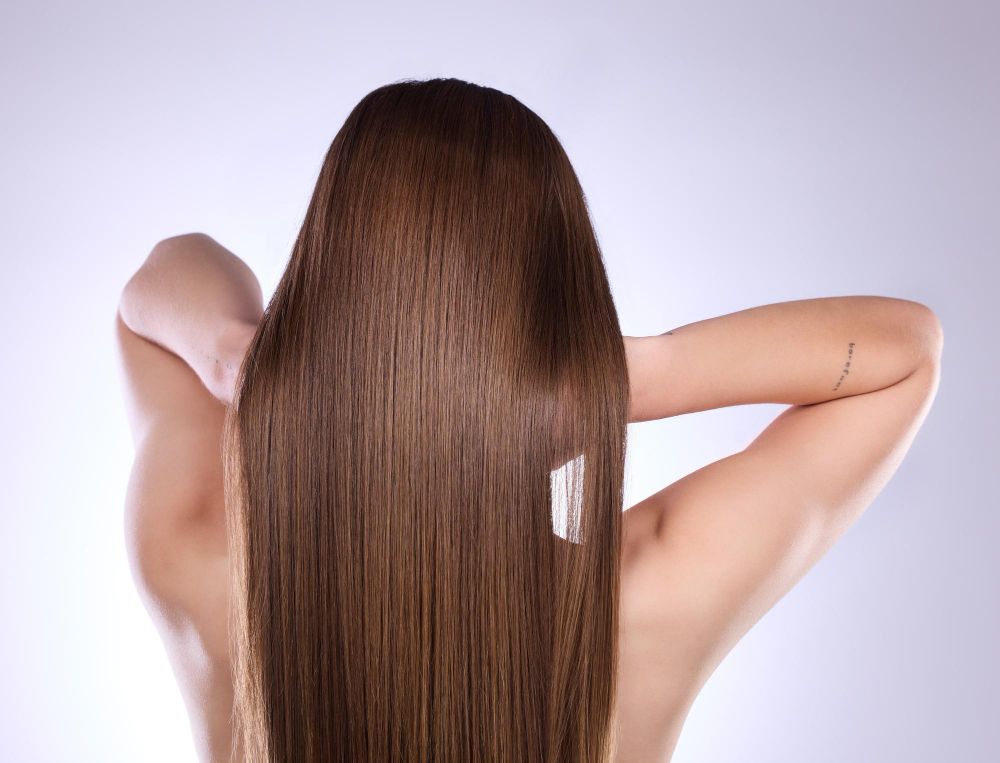
Amla oil helps enhance your hair’s natural shine
If your hair looks dull or feels rough, using amla oil may help bring back its natural luster. When applied to your hair strands, the oil creates a light coating that can reflect light better, giving your hair a smoother and shinier appearance.
This is one of the most common reasons people use amla oil as a finishing treatment or conditioner. It helps tame dryness, especially on the outer layer of the hair shaft, making it feel softer and easier to manage.
Helps manage frizz and protect moisture
Amla oil can also help control frizz and flyaways. When you apply it to damp or dry hair, it helps seal in moisture and reduce rough texture. This can be especially useful if you use heat tools or live in a dry climate where your hair loses moisture easily.
You can use a few drops on your ends after styling, or apply a small amount throughout your hair before washing for a deeper conditioning effect. While it won’t replace protein-based treatments or salon products, it’s a simple way to support healthy hair and add a soft, natural shine.

Other Ways to Use Amla for Hair Health
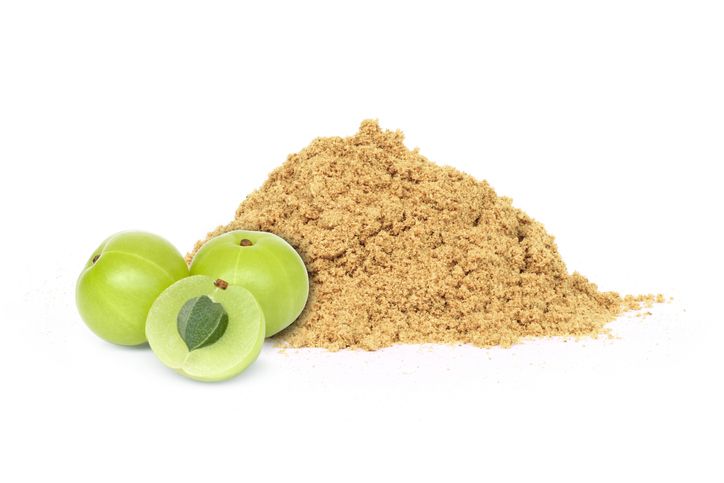
Amla powder, juice, and fresh fruit can support your routine in different ways
Amla isn’t just limited to oil. You can also use amla powder, amla juice, or fresh amla to support scalp health and enrich hair growth in other ways. These forms are popular in ayurvedic hair treatments and are often mixed into homemade masks, rinses, or even consumed for internal support.
• Amla powder is made by drying and grinding the fruit. You can mix amla powder with water, aloe vera gel, or coconut oil to create a paste. Apply it as a scalp and hair mask once a week. It may help reduce oil buildup, add shine, and gently cleanse the scalp.
• Amla juice is sometimes used as a drink to support digestive health and nutrient absorption, both of which may influence hair quality. Some also dilute it with water and use it as a scalp rinse, though its effects topically are not well studied.
• Fresh amla can be blended and added to DIY pastes with ingredients like fenugreek, yogurt, or honey. These natural mixtures may help calm scalp irritation and lightly condition dry strands.
If you prefer herbal medicines or DIY hair care, these alternatives give you a flexible way to use amla for hair health beyond just oil.
Book Now to Experience
F8 Hair Regrowth Treatment
1 Minute Self-Registration
Date should not be before minimal date

How to Use Amla Hair Oil for Best Results

Simple steps to apply amla oil and support scalp health
Using amla hair oil regularly can help improve your scalp condition and support stronger, healthier hair over time. How you apply it makes a difference, especially if your goal is to reduce hair fall or nourish your roots.
• Warm the oil slightly before applying. This helps it spread more easily and may improve absorption at the scalp.
• Massage gently into your scalp using your fingertips. Move in slow, circular motions for 3–5 minutes. This helps stimulate blood flow and may support follicle function.
• Leave the oil on for at least 30 minutes, or overnight for a deeper hair treatment. Wrap your hair in a soft towel or use a shower cap to avoid staining your pillow.
• Rinse with lukewarm water and a mild shampoo. Avoid hot water, which can dry out your scalp or hair shaft.
• Repeat once or twice a week depending on your scalp type and hair needs.
You can also mix amla oil with other natural ingredients like aloe vera, castor oil, or even a few drops of rosemary oil for a custom blend.

F8 Hair Regrowth Treatment: A Supportive Option for Stronger, Healthier Hair
If you're already using natural ingredients like amla oil to support hair growth and improve scalp health, pairing them with a targeted in-clinic treatment may help you achieve more noticeable results. The F8 Hair Regrowth Treatment is a non-invasive option designed to address thinning hair and support healthy scalp conditions—making it a good complement to home care routines that include amla hair oil, amla paste, or amla juice.
How the F8 Hair Regrowth Treatment Works
The F8 Hair Regrowth Treatment uses low-energy laser technology alongside a professional-strength hair growth serum. During the treatment:
1. Your scalp is assessed by a professional using high-magnification tools to examine your hair follicles and scalp condition.
2. Low-energy laser beams are applied evenly across your scalp. This gentle process helps stimulate hair follicles and activate the hair papilla—the base of the hair root. It also supports better blood circulation by strengthening surrounding capillaries.
3. A nutrient-rich serum is applied to your scalp, helping to clean, hydrate, and balance oil levels. The laser energy encourages better absorption of the serum, which helps create an ideal scalp environment for promoting hair growth.
How It Enhances the Effects of Amla for Hair Health
While amla acts as a natural hair tonic that supports follicle health and nourishes the scalp, F8 focuses on deeper activation of the follicles and improved nutrient delivery. The improved circulation and microcapillary support from the F8 treatment can help amplify the effects of amla by making it easier for nutrients from your routine—like those from amla oil or amla juice—to reach the roots.
Together, this combination may support healthier hair growth, stronger strands, and reduced hair fall over time.
Key Benefits of the F8 Hair Regrowth Treatment
• Non-invasive and safe: There’s no downtime, no damage to the scalp, and no discomfort during the procedure.
• Targets scalp issues: Helps reduce sebum buildup, unclogs follicles, and restores scalp hydration.
• Improves blood circulation: Supports hair follicle activity and may encourage regular hair growth.
• Customised care: Professional therapists monitor your scalp health and guide your treatment plan.
• For men and women: Suitable for anyone experiencing thinning, mild hair loss, or scalp imbalance.
If you’re using amla for hair health and want to support your results with a professional treatment, F8 can offer that extra layer of care.
Book F8 today to support healthy hair growth from root to tip.
New Beauty's F8 Hair Regrowth TreatmentBook Now to Experience
F8 Hair Regrowth Treatment
1 Minute Self-Registration
Date should not be before minimal date
FAQ
1. Can I use amla oil every day for hair health?
Yes, you can use amla oil daily if your scalp tolerates it well. For most people, applying it 2 to 3 times a week is enough to support healthy hair growth and maintain scalp health. If your scalp is naturally oily or prone to buildup, daily use may feel too heavy—especially if you're not rinsing it out regularly. Try massaging a small amount into your scalp, leaving it on for a few hours or overnight before washing with lukewarm water.
2. Is there a difference between drinking amla juice and applying amla oil for hair growth?
Drinking amla juice supports hair health from the inside, providing your body with vitamin C and antioxidants that help with nutrient absorption, collagen production, and overall health. On the other hand, applying amla oil or using an amla hair mask works topically to condition the scalp and protect hair follicles. Both methods may complement each other when combined with a balanced diet and good scalp care routine.
3. Can amla powder be mixed with other ingredients for better hair results?
Yes, you can mix amla powder with aloe vera gel, yogurt, honey, or even fenugreek seeds to create a custom hair mask. These blends may help hydrate the scalp, reduce itchiness, and strengthen hair strands. Mixing amla powder with coconut oil also makes it easier to apply and rinse off, especially if you're looking to nourish the scalp and hair roots in one step.
4. Does amla help with hair density or just hair length?
Amla is commonly used to support both increased hair growth and thicker-looking hair. Its antioxidants and potential to support scalp circulation may help promote hair density over time. While results vary between individuals, regular use of amla oil or amla paste may help reduce hair fall and improve overall volume—especially when paired with treatments that stimulate the scalp.
5. Can amla be used to treat androgenetic alopecia?
Amla oil is often used in traditional medicine to support hair health, but there's currently no scientific proof that it can treat androgenetic alopecia. That condition is genetic and typically requires medical treatments like minoxidil or other dermatologist-recommended solutions. Still, amla acts as a supportive ingredient that may help maintain a healthy scalp, strengthen hair roots, and reduce breakage—which may be helpful as part of a broader care plan.
Recommended Articles
COPYRIGHT© NEW BEAUTY MANAGEMENT LIMITED 2025. ALL RIGHT RESERVED.

